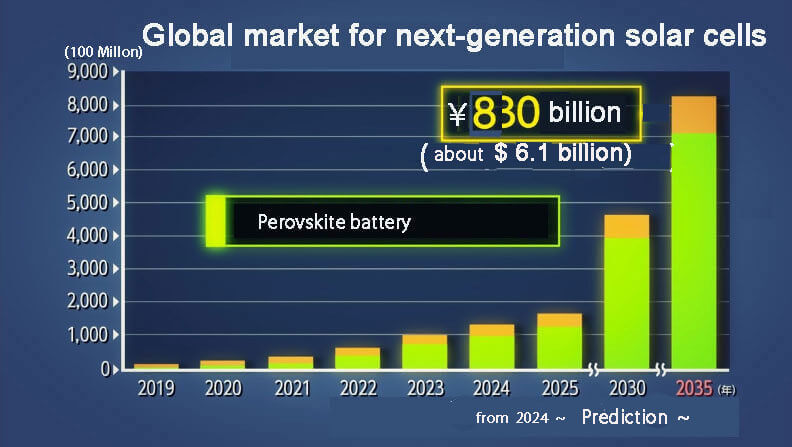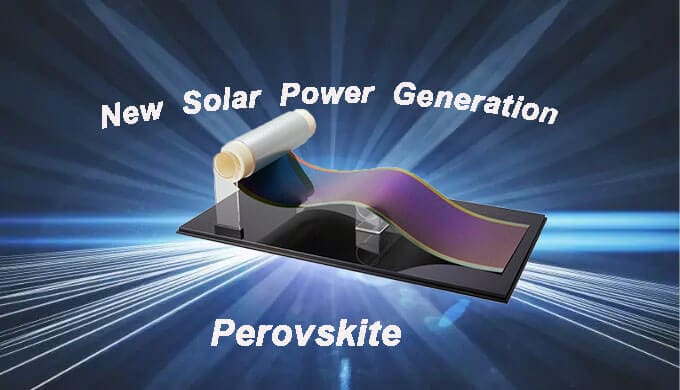Discovered by the Japanese University Professor
Research is also being conducted on solar cells made from new materials.
According to the reply from ChatGPT, the latest focus of attention is perovskite solar cells, an organic-inorganic hybrid that was first reported in 2009 by Professor Tsutomu Miyasaka and his team of Toin University of Yokohama.
And for which he was named a “strong candidate for the Nobel Prize” by an American academic information company.
And, the development of perovskite solar cells has been a collaborative effort by many scientists and research groups around the world.
Please see the following the video with which you’ll get it.
Is it patented?
Although the perovskite solar cell is an invention of Japanese origin, it has not been patented in Japan.
According to Tsutomu Miyasaka, specially appointed professor at Toin University of Yokohama, who developed the device, the reason for this is that the patent application was not made because it would require a large amount of money.
Although perovskite solar cells are still in the research stage, they are expected to achieve overwhelmingly low costs due to the simplicity of the manufacturing process, which requires only the application of materials to the substrate.
In addition, the coating on a thin substrate such as film makes it lightweight and allows for curved surface processing, so there is a possibility that solar cells can be installed on any object.
In the future, it may be possible to use solar cells for all the walls of a house or an entire automobile.

Perovskite solar cell wall installation
What’s Perovskite battery?
Perovskite solar cells are a rising star in the solar cell world and have attracted great interest in the academic community due to their rapid technological advances.
Solar cells, which convert sunlight into electricity, have been attracting attention as a renewable energy source.
Although each solar cell is very small, they can be used to charge batteries and light lamps by modularizing them.
They can also be used as the primary energy source for a building if the solar cells are arranged in parallel.

However, commonly available solar cells use silicon, which has the disadvantage of being more expensive to manufacture than conventional power sources.
This is where perovskite, a material with a crystalline structure that converts light into electricity, comes in.
Solar cells made from perovskite can be manufactured using both rigid and removable substrates, which, in addition to being less expensive, has the potential to make them lighter and more flexible.
However, before probeskites can be used in solar cells for practical applications, their size, efficiency, and lifetime must be improved through the creation of prototypes.
What’s Perovskite?
Perovskite is a mineral with a cubic or diamond-like crystal structure that was discovered over 170 years ago in the Urals of Russia.
Named after the Russian mineralogist Lev Perovsky, perovskite is found primarily in the Earth’s mantle, sometimes in near-surface deposits.

Perovskites can be synthesized from common chemicals and can be used in solar cells as well as light-emitting diodes, catalytic electrodes, fuel cells, IC chips, lasers, sensors, and other applications.
While several new solar cell materials have emerged in recent decades, they have not had a significant impact on the silicon-dominated market, where they are used in about 95% of existing solar cells.
However, researchers have long been interested in perovskites because of their potential for inexpensive, high-efficiency solar cells if they can be commercialized.
Several companies are now working toward commercial production of perovskite solar cells.
What about the recent conversion efficiency?
In addition to research being conducted in many countries, Japanese companies are also actively researching this technology, the conversion efficiency of perovskite solar cells from sunlight to electricity has improved dramatically, reaching a laboratory record of 25.2%.
In addition, the efficiency of “perovskite-on-silicon” tandem cells, which combine perovskite solar cells with conventional silicon solar cells, is now at 29.1% (up from 27% for conventional silicon solar cells) and rising rapidly.
Thus, research is rapidly increasing the efficiency of perovskite solar cells, and they have the potential to become an inexpensive and highly efficient alternative to conventional silicon solar cells.
Is there anything that has been commercialized and sold?
Enecoat Technologies, a venture company from Kyoto University, will start selling sensors using perovskite solar cells from April 2022.
The movement toward commercialization will continue to accelerate.
What is the expected market size in the future?
The reason for this is that each country’s response to decarbonization pushes up the demand for perovskite solar cells.

Perovskite solar cells are very revolutionary compared to conventional solar cell technology, and if development progresses, all solar cells may use perovskite.
As everyone notice if we continue to use neclear power generation at present, we have very big problems such as 1) Danger of Nuclear Accidents …2) No place to dispose of nuclear waste “radioactive waste” … 3) Radioactive materials are released even under normal conditions, and workers are exposed to radiation …4) Adverse effects on marine ecosystems …and so on.
I earnestly hope that the use of nuclear power plants should be stopped and that perovskite power generation will be used instead.
Along with, at the same time, other renewable energy generations that are expected to help combat global warming, global environmentally friendly such as wind, geothermal, and biomass power generation.
Thanks for visiting here, have a nice day!







